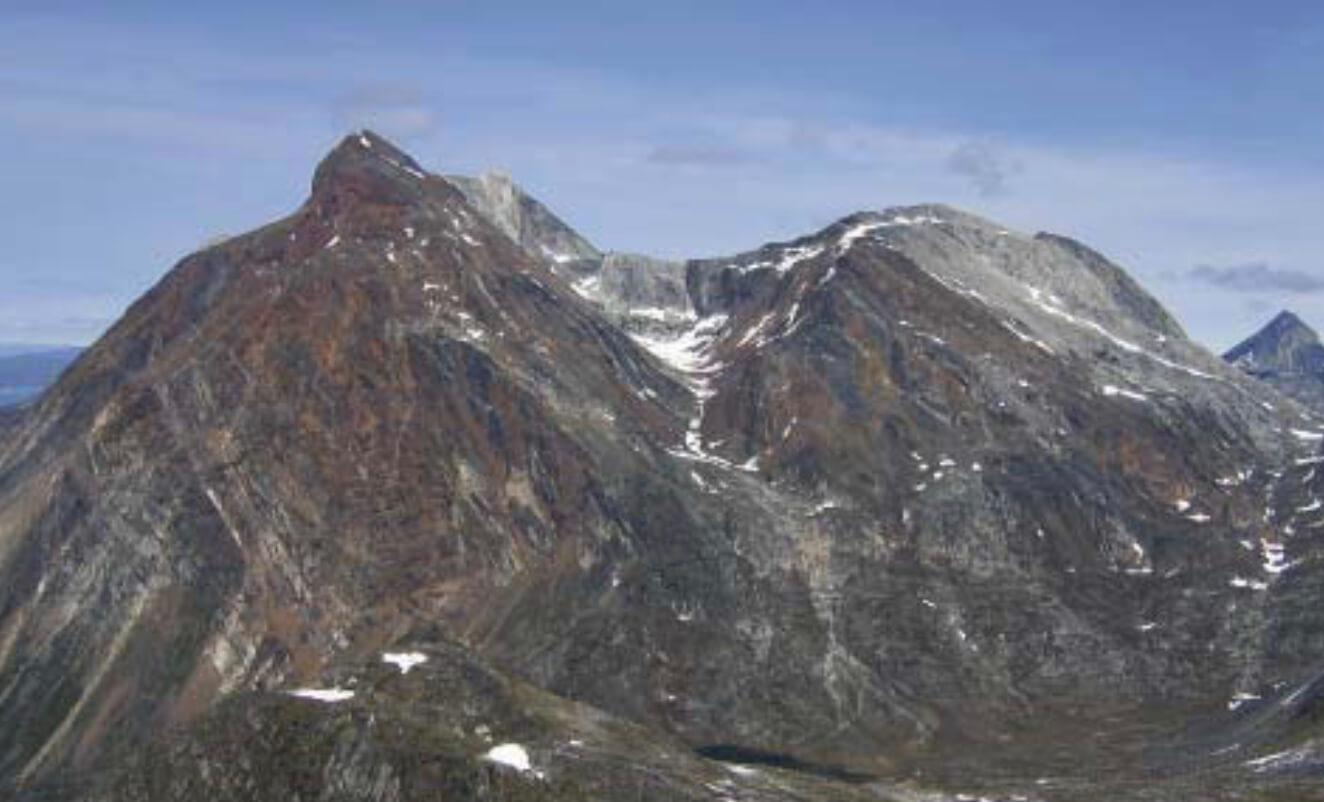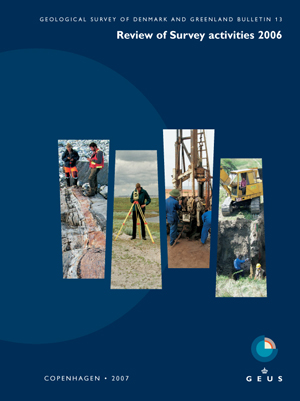
How to Cite
Share
Abstract
A gold prospect on central Storø in the Nuuk region of southern West Greenland is hosted by a sequence of intensely deformed, amphibolite facies supracrustal rocks of late Mesoto Neoarchaean age. The prospect is at present being explored by the Greenlandic mining company NunaMinerals A/S. Amphibolites likely to be derived from basaltic volcanic rocks dominate, and ultrabasic to intermediate rocks are also interpreted to be derived from volcanic rocks. The sequence also contains metasedimentary rocks including quartzites and cordierite-, sillimanite-, garnet- and biotite-bearing aluminous gneisses. The metasediments contain detrital zircon from different sources indicating a maximum age of the mineralisation of c. 2.8 Ga. The original deposition of the various rock types is believed to have taken place in a back-arc setting. Gold is mainly hosted in garnet- and biotite-rich zones in amphibolites often associated with quartz veins. Gold has been found within garnets indicating that the mineralisation is pre-metamorphic, which points to a minimum age of the mineralisation of c. 2.6 Ga. The geochemistry of the goldbearing zones indicates that the initial gold mineralisation is tied to fluid-induced sericitisation of a basic volcanic protolith. The hosting rocks and the mineralisation are affected by several generations of folding.
How to Cite
Share
Copyright (c) 2007 Christian Knudsen, Jeroen A M van Gool, Claus Østergaard, Julie A Hollis, Matilde Rink-Jørgensen, Mac Persson, Kristoffer Szilas

This work is licensed under a Creative Commons Attribution 4.0 International License.
Downloads
Edited by Martin Sønderholm and A.K. Higgins
The Review of Survey activities presents a selection of 17 papers reflecting the wide spectrum of activities of the Geological Survey of Denmark and Greenland, from the microscopic to the plate-tectonic level.
Activities in Denmark: The Survey's field of activities in Denmark is illustrated by three papers on [...]









